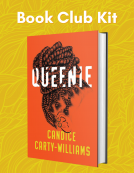
Clitso Dedman, Navajo Carver
His Art and His World
by Rebecca M. Valette
This title was previously available on NetGalley and is now archived.
Send NetGalley books directly to your Kindle or Kindle app
1
To read on a Kindle or Kindle app, please add kindle@netgalley.com as an approved email address to receive files in your Amazon account. Click here for step-by-step instructions.
2
Also find your Kindle email address within your Amazon account, and enter it here.
Pub Date Dec 01 2023 | Archive Date Nov 30 2023
University of Nebraska Press | Bison Books
Talking about this book? Use #ClitsoDedmanNavajoCarver #NetGalley. More hashtag tips!
Description
At age sixty, suffering from arthritis, Dedman turned his creative talent to wood carving, thus initiating a new Navajo art form. Although the neighboring Hopis had been carving Kachina dolls for generations, the Navajos traditionally avoided any permanent reproduction of their Holy People, and even of human figures. Dedman was the first to ignore this proscription, and for the rest of his life he focused on creating wooden sculptures of the various participants in the Yeibichai dance, which closed the Navajo Nightway ceremony. These secular carvings were immediately purchased and sold to tourists by regional Indian traders. Today Dedman’s distinctive and highly regarded work can be found in private collections, galleries, and museums, such as the Navajo Nation Museum at Window Rock, the California Academy of Sciences in San Francisco, and the Arizona State Museum in Tucson. Clitso Dedman, Navajo Carver, with its extensive illustrations, is the story of a remarkable and underrecognized figure of twentieth-century Navajo artistic creation and innovation.
Advance Praise
“Rebecca Valette’s history of the life of the early to mid-twentieth-century Diné trader, architect, and master wood carver, Clitso Dedman, is a fascinating work—well written and beautifully illustrated. Empathetically written in consultation with descendants, it also uses an amazing array of print and archival sources, which would-be writers of poorly documented Indigenous life histories will appreciate. The book’s thorough inventory of Dedman’s carvings and their dispositions will interest students of Indigenous art marketing and collecting as well.”—Klara Kelley, coauthor of Navajoland Trading Post Encyclopedia
“Although Clitso Dedman’s artistic career spanned only about thirteen years, his carved figures are instantly recognizable and highly prized by collectors and dealers alike. As the first detailed account of Dedman’s life, this book is an important contribution to the literature and allows a deeper appreciation for his work. Weaving together a wealth of obscure facts about the artist’s life, Rebecca Valette gives a wonderful account of how one man bridged two cultures, a problem that continues to challenge nearly every Native American today. Equally important, Valette establishes a guide to dating Dedman’s work, the majority of which still remains in private collections.”—Russell Hartman, former anthropology collections manager at the California Academy of Sciences and former director-curator of the Navajo Nation Museum
“Rebecca Valette has uncovered long-hidden information about one of the most important artists of the Navajo Nation. This book reveals for the first time the early life of Clitso Dedman and his relationship with Indian traders on the Navajo Nation, which encouraged his wood carvings of participants in ceremonial life of the Diné people, particularly the Nightway ceremony. Additionally, Valette reveals the known locations of Dedman’s carvings—single carvings, sets of four carvings, and his magnificent and rare complete sets containing sixteen carvings. Because of Valette’s diligent work, now the works of this Diné artist are documented and available for the first time ever.”—Alexander E. Anthony Jr., owner and director of Adobe Gallery, Santa Fe, New Mexico
Available Editions
| EDITION | Other Format |
| ISBN | 9781496235817 |
| PRICE | $39.95 (USD) |
| PAGES | 312 |
Available on NetGalley
Average rating from 5 members
Featured Reviews
 Reviewer 186721
Reviewer 186721
The author did a great job of bringing artist Clitso Dedman's work to light. I was able to appreciate the harships, hope, aspiration and inspiration of Clitso Dedman who shaped himself as the life circumstances kept changing. The art work is beautifully displayed and well researched.
 Kerry P, Reviewer
Kerry P, Reviewer
This book is primarily for readers interested in Native American folk art. The artist began carving figures in his sixties after working as a machinist, blacksmith and managing trading posts. The book covers the impact of railroad development on the Southwest, which I was familiar with from having visited the New Mexico History Museum in Santa Fe. The railroad magnates built the rails, hotels and provided excursions for wealthy clients interested in Native American archeology and artwork. The tourist trade was developed by the railroad magnates, and the Native American trade posts sold blankets, jewelry, pottery and other artwork much like they do today. Dedman’s figures from the 1940s are included in the collection at the Museum of Indian Art and Culture in Santa Fe.
My first white girl experience with kachina dancers was being a toddler, watching Gumby (my hero) on our black and white TV. There were a number of episodes featuring these beautiful images and figures and I've been intrigued all my life. To find a book such as Rebecca M. Valette has written and provided to further educate people on them, from a Navajo perspective and artist was irresistible for this reader.
Clitso Dedman, is not this artist's birth name. It is the name Americans used as his uniqueness and various successes as one who was willing to learn white ways created a conspicuousness that stayed with him throughout his life. He could explain and translate for whites talking to native peoples, and could go the other direction just as nimbly.
The author explores his origins in his clans, and the experiences he and his family had when Indian School attendance was imposed on his people. She provides her deeply researched information and obvious passion in Clitso's abilities and the ways he found to thrive in a system and environment where many did not. His exceptionalism is not portrayed at the expense of his fellows, but rather to show the unusualness of his spirit. Along with his personal experiences, the author provides context in both place, nation (Navajo / USA), and is very clear that the diversity of the first nations was thoroughly quashed by the imposition of America and other nations to constantly regard all first nations into one homogenous tribe. Although Ms. Valette's focus is on the Navajo culture and peoples generally, and on Mr. Dedman particularly, she shows in her endpapers the many different versions, tribes, clans and people who also engaged in making images of these dancing gods. . . the figures I called (and loved): kachina dolls.
It is a welcome addition to our world that this book was written, recognizing missteps, and casting a long glance at the histories we've been taught. In that process we are sure to find others who need recognition and proper attribution for their labors, art and sacrifice. A celebration of Clitso Dedman and his work has been a long time landing on our book shelves!
*A sincere thank you to Rebecca M. Valette, University of Nebraska Press, and NetGalley for an ARC to read and independently review.* #ClitsoDedmanNavajoCarver #NetGalley
Readers who liked this book also liked:
We Are Bookish
Mystery & Thrillers, OwnVoices, Teens & YA
Silvia Moreno-Garcia
Historical Fiction, Literary Fiction, Sci Fi & Fantasy
L.M Montgomery
Children's Fiction, Comics, Graphic Novels, Manga, Teens & YA
We Are Bookish
Literary Fiction, Multicultural Interest, Women's Fiction


















